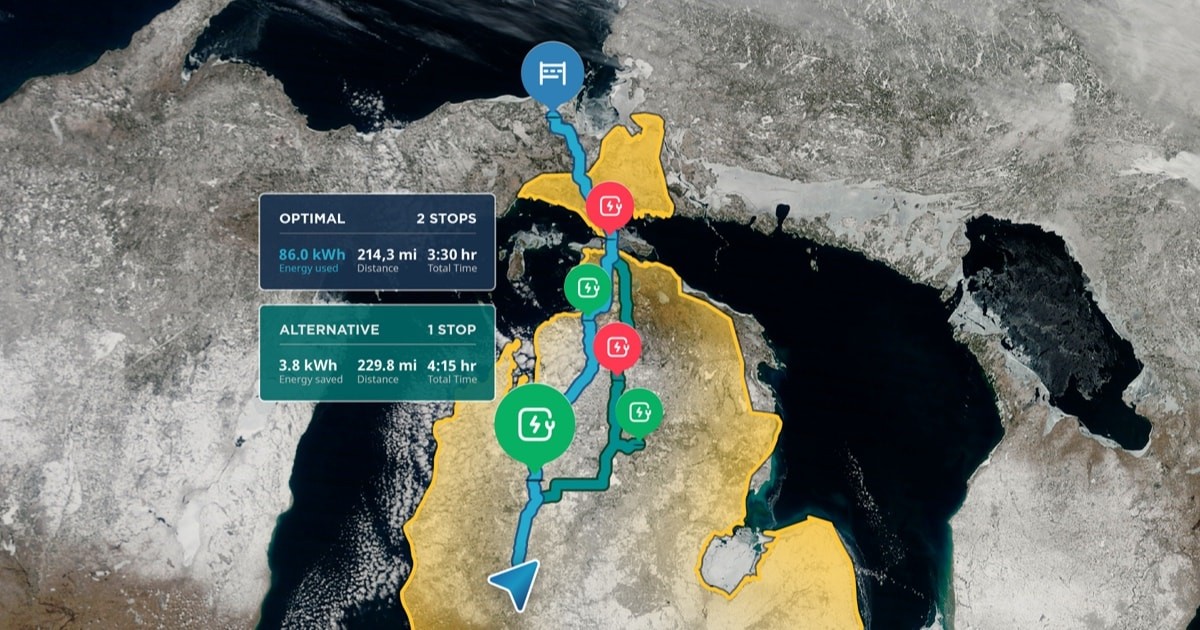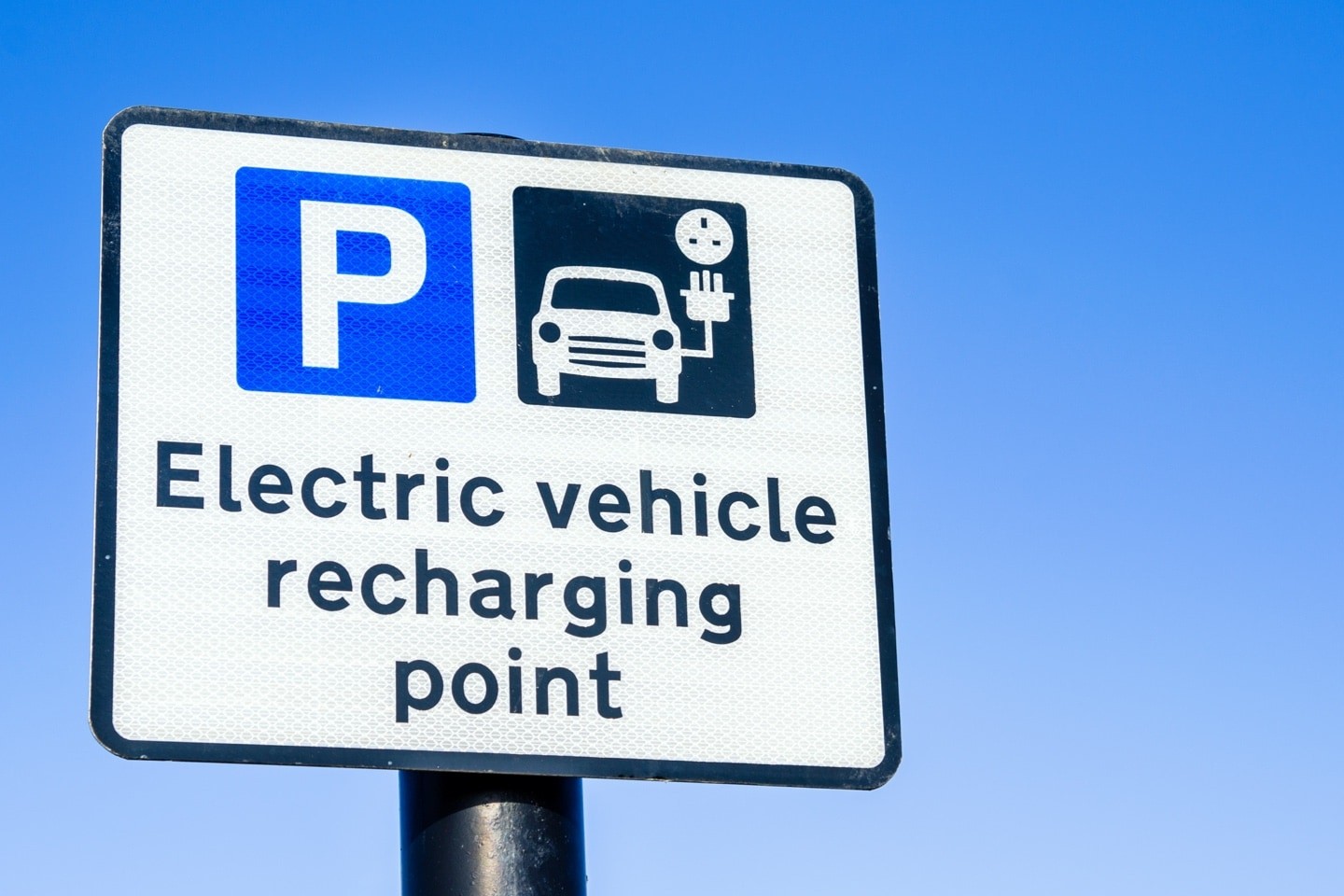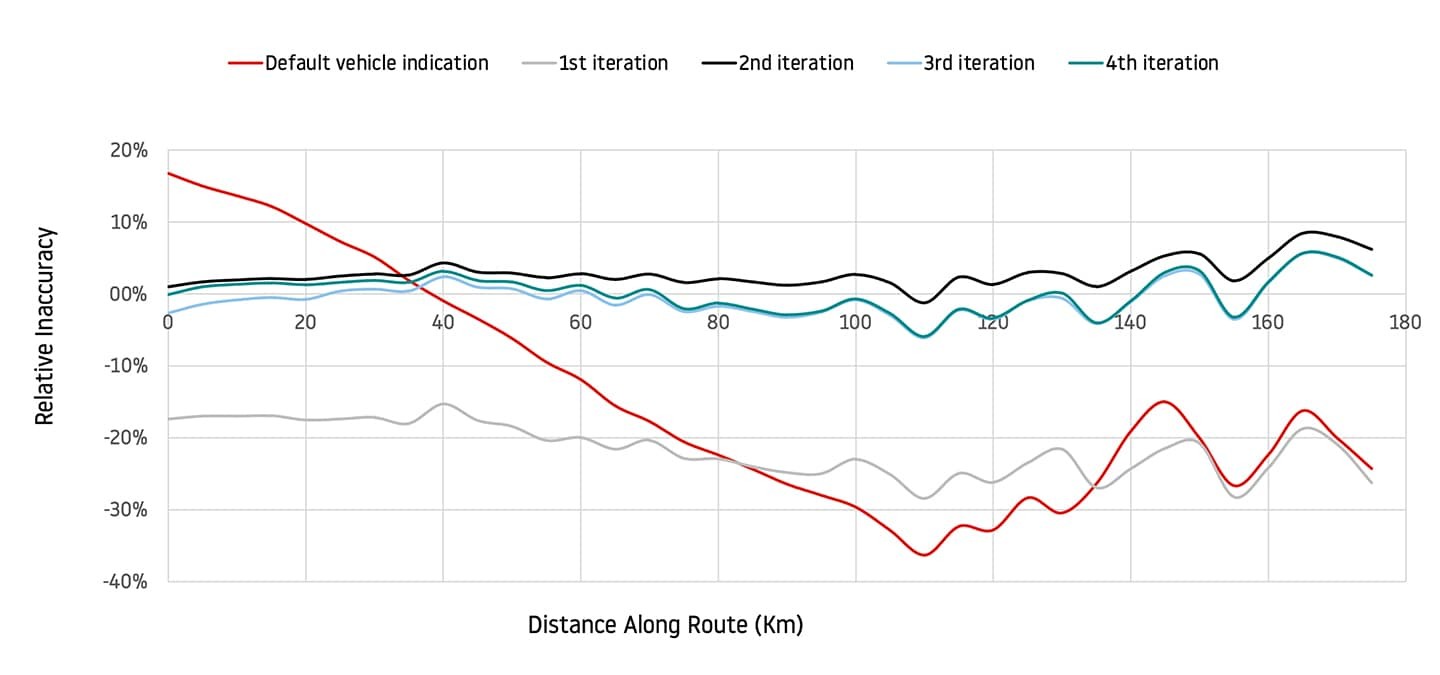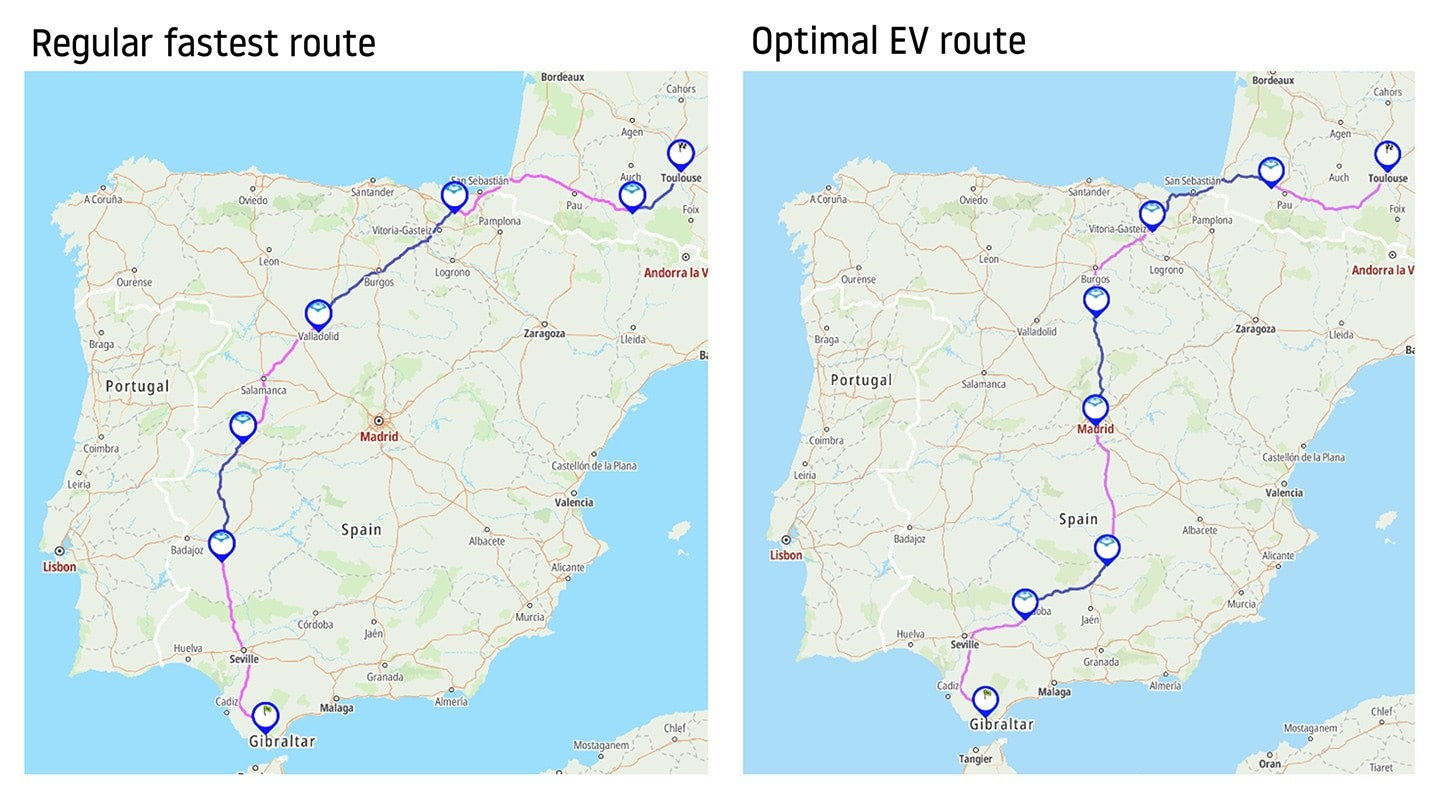The complexity of fixing range anxiety
&w=256&q=90)

The one thing that keeps rearing its head anytime EVs come up in conversation is range anxiety. Regardless of how you start the conversation, eventually it finds its way back to how far EVs drive and how much of a pain it is charging them. Naysayers lean on range anxiety as a reason not to buy an electric vehicle, whereas EV owners often say it’s not as much of an issue as it sounds. In truth both arguments are correct. Range anxiety is complex and “fixing” it requires a comprehensive multilateral solution.
In the simplest terms possible, range anxiety is that lurking feeling, an unease that never quite leaves you, that when driving an EV, you’ll run out of electricity miles from the nearest charger.
The solution to range anxiety seems simple: build EVs with longer ranges and install more chargers.
Improving the range of EVs and increasing charger density will certainly help, but it’s just part of the solution. That basic definition fails to expand on other key nuances that tell a more comprehensive story of range anxiety.
In a recent webinar on the topic, Robin van den Berg, TomTom’s senior product manager for EV, gave us insight into this story. He explains how highly accurate range calculations and specialist EV routing algorithms are just as important in the pursuit to solving range anxiety as infrastructure and how far EVs can drive on a single charge.

EV charging infrastructure is important if we’re to support the adoption of electric vehicles. However, there’s a lot more we can do to allay drivers’ concerns.
The truth about range anxiety
Before we get to how crucial range calculations are and EV routing is, it’s important to fully understand how range anxiety manifests. We need to consider what our anxiety is rooted in and ask: “What are we actually worried about?”
As van den Berg points out, having enough charge day to day shouldn’t be an issue, on average.
Figures from the International Energy Agency, show that in 2020 the average EV was capable of driving 350 km (220 miles) on a single charge. Today, that figure is closer to 400 km (300 miles) and is likely to further increase over the next few years.
What’s more, the US Federal Highway Association estimates that the average daily mileage of an American driver is just 37 miles (59 kilometers). Most drivers would only need to charge twice a week and could be fully serviced by a home charger or one at work – given that a car spends 95% of its time parked, it has plenty of time to recharge.
In this context, it’s easy to wonder why we experience range anxiety at all, why we’re so keen on fast chargers, and why we dream of EVs that can drive more than 500 miles on a single charge. On the surface it sounds like we have it good enough already.
This line of thinking is too theoretical, though. In the real-world, predicted EV ranges aren’t always accurate and that brings significant uncertainty for drivers. It’s as if they can’t trust their EV’s fuel gauge and are therefore anxious they might run out of charge when they think they have more than they do.
“Having a too simplistic approach for range estimation will actually cause heavy fluctuation and increases in that anxiety,” van den Berg said.
What’s more, while averages work as generalizations across large groups, the reality is that some drivers drive a lot and others drive very little. When this is averaged out, it makes it sound like EVs work for everyone, but for those high-mileage and regular drivers, that’s not the case.
TomTom’s EV routing product manager, Hanno Spijker, says that even driving in the Netherlands, a country with a great EV charging network when compared to most other countries, it’s still possible to experience range anxiety.
Even brand new EVs are far from perfect. Spijker recalls driving 20 km but seeing the vehicle’s range indicator drop by 40 km. When blindsided by a poor range calculation, finding the correct and closest charger for your car is not a trivial concern.
We also need to consider route optimization. How fast you drive, the elevation gain and loss on a journey and the weather, all affect range. In terms of decreasing the overall journey time, when you charge is as important as where and for how long.
EV batteries have what is called a charging curve. This curve is the result of a protective measure and is a characteristic of the battery. Essentially, how much charge your EV has when you plug it in will affect how fast it can add any additional charge. The “emptier” it is, the faster it will charge.
Generally speaking, charging from 5% to 50% will take much less time than charging from 50% to 95%, all other things being equal. So, if getting from A to B as quickly as possible is important, when we charge relative to current energy levels, the car’s charging curve and distance from our destination, shouldn’t be ignored.

There are a many different standards when it comes to EV charging. There’s connector type and there’s power. Depending on your vehicle and how much you need to charge, finding something that’s perfect for your needs and within range can be tricky.
This complexity adds yet another lay of stress and anxiety, but that’s not the end of it.
Van den Berg highlights a piece of research carried out by TomTom which maps the user journey of EV drivers when planning trips. It shows how the complexity of pre-trip planning, when an EV driver is going beyond the range of their vehicle, increases dramatically compared to within-range trips.
“We know that they take significantly more steps and of course consult more sources like different driver apps and sometimes call ahead of time to the destination to see if the charging options are actually available,” van den Berg says.
With these extra considerations, it’s easier to appreciate why drivers still experience significant range anxiety. Especially when they start thinking about those high-stakes journeys like family holidays with the children or last-minute cross-country trips.
Range anxiety is more than a stress caused by sub-optimal infrastructure, it’s a psychological phenomenon brought about by unreliable vehicle characteristics, a complex route planning eco-system, a lack of familiarity with new technologies and a poor EV experience.
There is no simple solution
When TomTom asked drivers what they want as a solution to this problem, they responded universally: they want their cars to be able to calculate and manage all the complexities of route planning for EV road-trips on their own. Drivers want simplicity, but that means carmakers and companies like TomTom must handle the complexities of range anxiety for them.
For TomTom, that complex solution begins with accurate consumption modelling to accurately estimate range, this reassures drivers and restores their trust in their vehicle’s power gauge.
There are two components to this model, Spijker explains, “Vehicle specifics and location data”.
These are used to build a physical consumption model that takes parameters, such as vehicle mass, battery capacity, remaining energy, auxiliary power, constant speed consumption curve, uphill and downhill efficiencies, and acceleration and deceleration into consideration alongside location data about the road such as slope, curvature, speed profile, traffic and class.
This means that calculated estimated range will consider the impact of switching on the air conditioning, which is captured as part of the auxiliary power consumption parameter, on vehicle range.
It will also factor in how driving up a hill consumes more energy than driving down it, where energy can in many cases be recuperated. So, understanding these efficiencies is key to understanding how a route impacts overall range.
What’s more, by appreciating where the EV is being driven, on what type of road, TomTom can provide more accurate range estimations. Driving through a city, an EV consumes energy in a very different way to steady state highway driving, both of which need to be respected if an accurate range estimation is to be delivered to the driver.
These are just three examples, there are many more parameters considered by TomTom’s range estimation model to provide a more accurate idea of how far the vehicle can drive, based on how, where and when it’s being driven. What this really highlights is how much detail is required to give drivers a highly accurate range estimation.
Beyond vehicle characteristics to location data
To provide accurate range estimations, TomTom’s model also considers driving modes, battery aging and thermal management.
Now that mass market EVs have been around for more than 10 years, we know a lot about how they work in the real-world.
For example, it’s well known how temperature affects range. A real-world test conducted by NAF (the Norwegian Automobile Federation) showed just how much EV range can decrease in low temperatures. On average, EVs lost 18.5% in terms of range compared to their WLTP quoted figures.
We’re also aware that battery degradation, while not as much of a concern as we first thought, is still a very real issue and needs to be taken into account if accurate range estimations are to be provided throughout the vehicle’s entire life.
“They key here,” Spijker says, “is to collaborate with customers [carmakers] to deeply integrate and finetune this model for specific vehicles”.
For now, I’ll let the numbers do the talking. Below is a graph demonstrating the improvements to range estimation accuracy through the model’s various iterations.
As can be seen, the default vehicle estimation (red line) varies wildly. To begin with it overestimates range and beyond a certain point in the route it begins to vastly underestimate the vehicle’s range. However, by the second, third, and fourth iterations, the model’s level of detail and accuracy improved dramatically. (The closer to 0% the better.)

With this newfound level of accuracy, the part of range anxiety that’s connected to not knowing precisely how much range your vehicle has and not being able to trust its “fuel” gauge is a thing of the past. As EV drivers gain more trust, inaccurate range estimation induced driving stress will disappear.
A new dimension of range estimation
The crudest range estimation visualizations display a vehicle’s possible range from its current location “as the crow flies”. Placing the vehicle in its location on the map and showing with a circular area how far it can travel based on its current state of charge.
However, the reality is different. As the images below show, depending on the type of road, its characteristics and the route driven, the working range of a vehicle isn’t the same in every direction. The effective range of a vehicle is skewed by landscape, range is not a perfect circle, Spijker comments.
When showing a driver how far they can travel relative to their surroundings needs to consider the roads they’d have to drive on and how their characteristics affect range.
TomTom calls its solution to this problem High Resolution 360-degree range calculation. It takes the range estimation model and applies it to all the roads available to a vehicle from its given location. Estimating range on each route based on the vehicle and the road’s characteristics to provide an accurate estimate of how far you’d be able to travel if you head that direction.
Beyond range, optimal EV routes
Providing accurate range estimations is part of the solution to allaying range. But the real concern for EV drivers is what happens when they must travel beyond the range of their vehicle.
For ICE drivers, it’s simple: you drive until you need fuel, you pull into the next filling station, fill up in ten minutes, and get back on your way with many hundreds of miles of range restored to your vehicle.
Driving an EV is a different proposition entirely and when we compute optimal EV routes, we see completely different suggestions compared to the conventional “fastest” route that could be chosen.

Take this trip from Toulouse to Gibraltar for example. The conventional fastest route heads west of Madrid, before heading south to the destination. While this route could still be driven in an EV, with chargers on route, it’s not the best choice overall.
Heading through Madrid, and taking a more central route through the country, before heading to Gibraltar is the optimal EV route as it provides better access to chargers, uses EV friendly roads and is a better route when we consider the characteristics of an EV.
The heart of the matter
At the moment, range anxiety is still an issue for many, and it still represents the main barrier to buying an EV. It’s not surprising that conversations about electrically powered driving come back to the topic.
For general day-to-day use, their anxieties might be unfounded, however, owning a car should provide flexibility. It should let drivers go on long trips at a moment’s notice. With poor range calculations and poor routing, EVs won’t be able to provide that flexibility.
Until we have EVs that do all the heavy lifting so drivers don’t have to spend hours checking apps, researching routes and confirming charging stations are functional, range anxiety will continue to be an issue.
Thankfully, with TomTom’s model integrated into its automotive products a solution here. Its accuracy is only going to improve as we gain more understanding about the efficiencies of EVs and carmakers further integrate the solution into their vehicles and work with TomTom to improve it even further.
With the transition to electric vehicles inevitable, we should all be thinking EV first. Drivers should consider an EV for their next car; they should think about how it would fit into their life. Carmakers, OEMs and suppliers should look beyond just making EVs to join the revolution, but they should look at every step they can take to address the issues that prevent people from adopting the technology.
Good EVs are a start, but we need great. Great consumption modelling, great range estimation and great EV route planning to make our journeys stress free and without any hidden surprises.
People also read
)
What is a digital cockpit? The future of in-vehicle infotainment
)
Beyond EV range anxiety – keeping the e-mobility revolution rolling
)
Informing without overwhelming, the secret to designing great in-car user experiences
* Required field. By submitting your contact details to TomTom, you agree that we can contact you about marketing offers, newsletters, or to invite you to webinars and events. We could further personalize the content that you receive via cookies. You can unsubscribe at any time by the link included in our emails. Review our privacy policy.